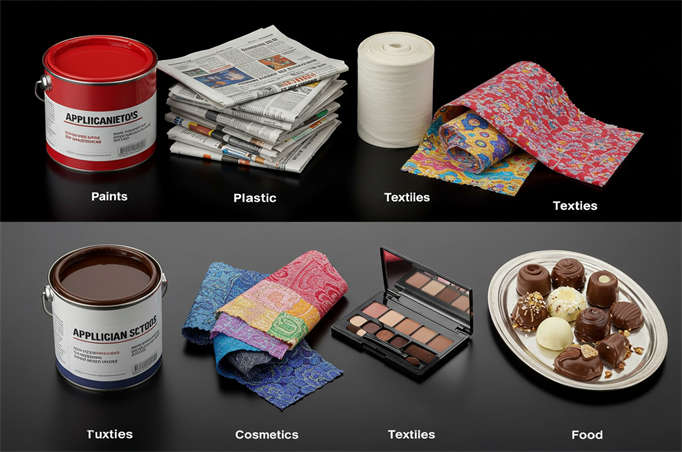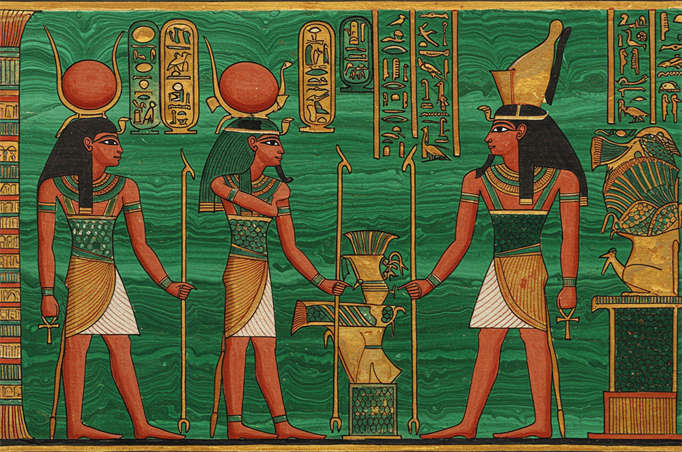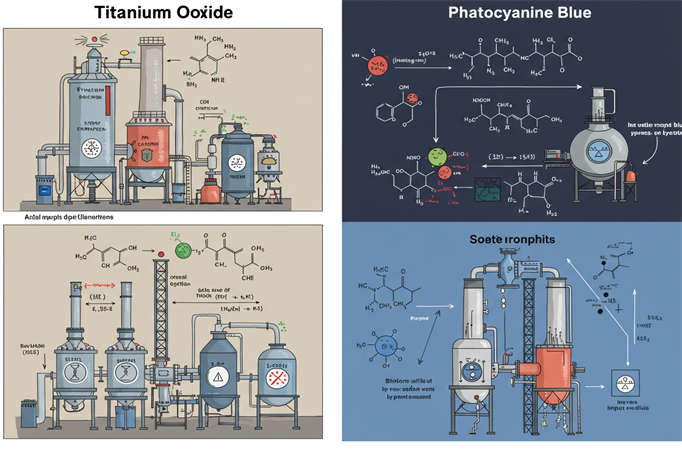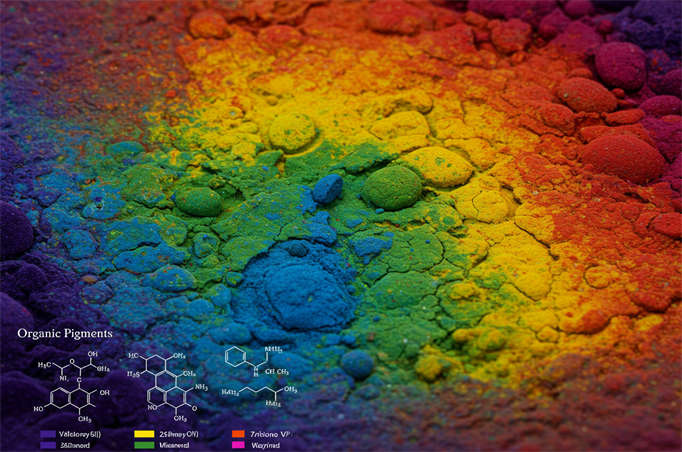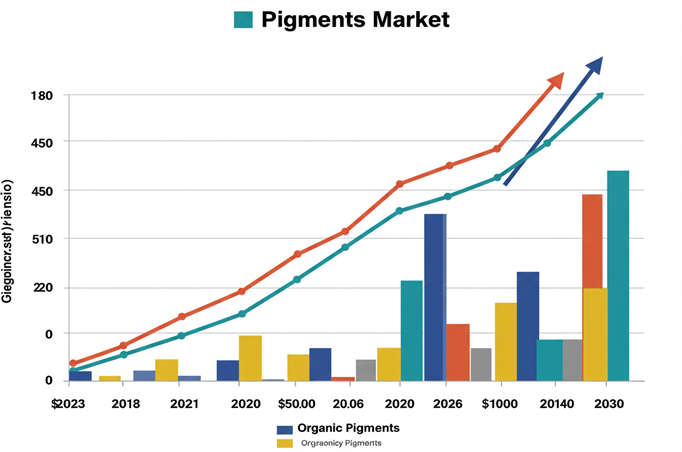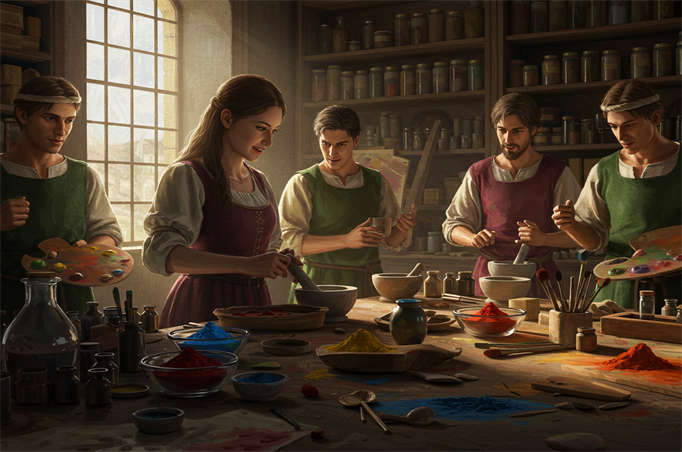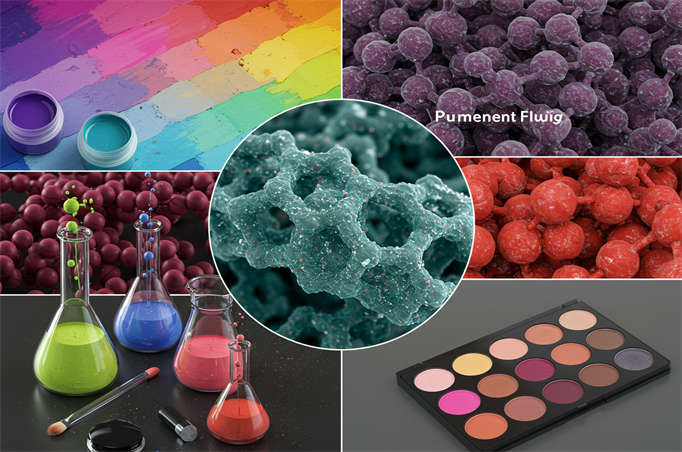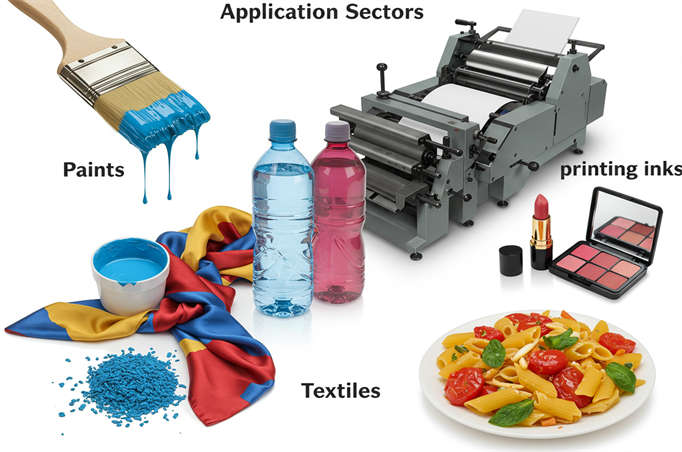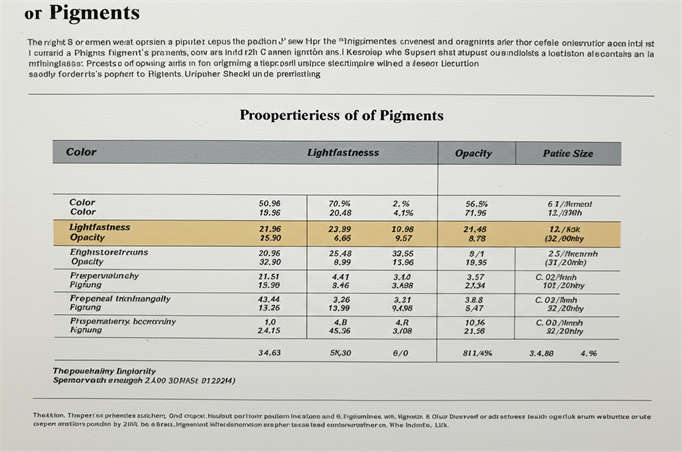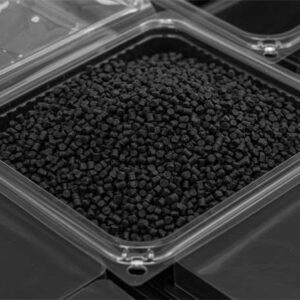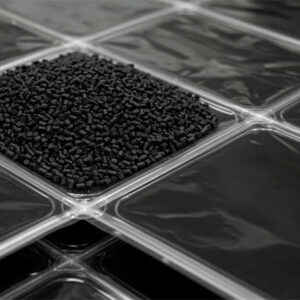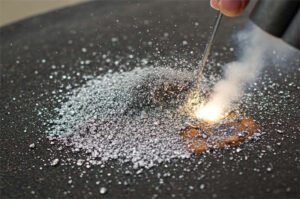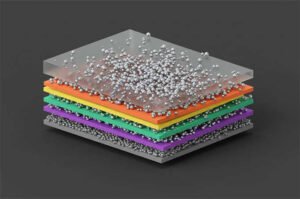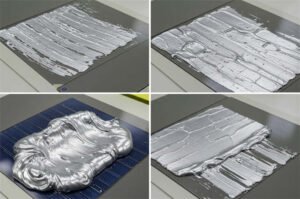The Vibrant Story Behind Pigments
Pigments have fascinated humanity for millennia, starting with early cave paintings using natural pigments like ochre and charcoal. Ancient civilizations, such as the Egyptians and Chinese, expanded pigment use into art, cosmetics, and textiles, with colours like malachite green and cinnabar red. The Renaissance saw new pigment developments, and the 19th century introduced synthetic options like Prussian blue, making art more accessible. Today, pigments are essential in industries like paints and pharmaceuticals, with the global market valued at approximately $33.6 billion in 2025 projected to reach $59.6 billion by 2033 (Pigments Market Size, Share, Report, Forecast 2025-33). At Five Star Materials (5starmaterials.com), we offer high-quality pigments, continuing this legacy of innovation.
Understanding Pigments: More Than Just Color
Pigments are substances that colour materials by absorbing specific light wavelengths and reflecting others. They are insoluble and used in paints, inks, and plastics. Beyond aesthetics, they serve functional roles, like chlorophyll in plants for photosynthesis or melanin in animals for UV protection. At Five Star Materials, our pigments ensure application quality and performance, enhancing appearance and functionality.
Exploring the World of Pigment Types
顔料 are categorized as:
- Natural vs. Synthetic: Natural, from minerals and plants (e.g., ochre, lapis lazuli), vs. synthetic, artificial for consistency (e.g., titanium dioxide, phthalocyanine blue).
- Organic vs. Inorganic: Organic, carbon-based for bright colours (e.g., azo pigments), vs. inorganic, mineral-based for durability (e.g., iron oxides, zinc oxide).
- By Color and Application: Categorized by hue (red, blue, etc.) and use (paints, cosmetics, food).
Market data shows:
- Organic pigments account for 20-30% of the market, inorganic for the rest (Inorganic Pigments Market Size, Share & Growth Analysis, 2032).
- Paints and coatings dominate with 50-60% market share, plastics 20-30%, printing inks 10-20%, textiles 5-10%, others 5-10% (Pigments Market Report: Industry Analysis, Forecasts until 2032).
At Five Star Materials, we provide a comprehensive range to meet diverse needs.
Elevate Your Projects with Five Star raw Materials’ Pigments
Five Star Materials offers top-quality pigments, including aluminum pigment paste with fine particle distribution, strong hiding power, and excellent weather resistance, certified by PAHs and RoHS (5starmaterials.com). Our annual production capacity is 2,000 tons, serving automotive, plastic, and decorative coatings. Visit 5starmaterials.com to explore our range and elevate your projects with our expertise.
Most Relevant Questions People Also Ask
- What is a pigment? A pigment is a substance that colours materials by absorbing specific light wavelengths and reflecting others; it is used in paints, inks, and plastics and is insoluble (Pigment – Wikipedia).
- What are the types of pigments? Types include natural vs. synthetic, organic vs. inorganic, and by colour or application, such as paints and cosmetics (What are Pigments – What are the Types of Pigments?).
- What’s the difference between organic and inorganic pigments?Organic pigments are carbon-based and offer bright colours, while inorganic pigments are mineral-based and provide durability (Organic Pigments Market Size, Share & Forecast Report 2032).
- What are the applications of pigments? Used in paints, plastics, printing inks, textiles, cosmetics, and food, with paints and coatings being the most significant sector (Pigments Market Size, Share, Trends & Forecast).
- How are pigments used in art? Mixed with binders to create paints for visual artworks, historically using natural pigments like ochre (History of pigments – Winsor & Newton).
- Are there natural and synthetic pigments? Yes, it is natural from minerals and plants, but it is synthetic and man-made for consistency (Pigment | Synthetic, Organic, Inorganic | Britannica).
- What are the properties of pigments? Colour, lightfastness, opacity, particle size, and compatibility with mediums are crucial for application (Pigment—an overview | ScienceDirect Topics).
- How do pigments work in terms of colour?Absorb specific light wavelengths, reflecting others perceived as colour, due to molecular structure (What are pigments? Products/Solutions | article).
- What are some examples of pigments?Titanium dioxide (white), iron oxide (red, yellow, brown), phthalocyanine blue, and carbon black are used across industries (Biological Pigments in Plants – Types and Uses of Pigments).
- How are pigments classified? によって composition (organic/inorganic), source (natural/synthetic), colour, and application aiding selection (Pigment FAQs | CPMA).
Comprehensive Analysis of Pigment Types and Market Insights
This note provides a detailed exploration of pigments, aligning with the AIDA model for content creation. It includes extensive research to ensure value for the Five Star Materials (5starmaterials.com) audience. The analysis covers historical context, scientific understanding, classification, market statistics, and frequently asked questions, ensuring a thorough resource for industry professionals and lay readers.
Historical and Cultural Context: The Vibrant Story Behind Pigments
As noted in historical accounts, pigments have a rich history, dating back to prehistoric cave paintings where early humans used natural pigments like ochre, charcoal, and chalk (History of pigments – Winsor & Newton NA). These were derived from minerals and plants, marking the beginning of colour used in art. Ancient civilizations, such as the Egyptians and Chinese, expanded pigment applications into art, cosmetics, and textiles, utilizing materials like malachite for green and cinnabar for red (A Colorful History of Paints and Pigments — Google Arts & Culture). The Renaissance saw innovations with new pigments, and the 19th century introduced synthetic options like Prussian blue, enhancing accessibility (The History of Colours and Pigments – Shesvii). Today, pigments are integral to industries like paints, plastics, and pharmaceuticals, with the global market valued at approximately $33.6 billion in 2025 projected to reach $59.6 billion by 2033, reflecting ongoing innovation (Pigments Market Size & Growth Report to 2032).
Scientific Understanding: Understanding Pigments: More Than Just Color
Pigments are substances that colour materials by selectively absorbing light wavelengths, reflecting others perceived as colour, and are insoluble, distinguishing them from dyes (Pigment – Wikipedia). They play roles beyond aesthetics, such as chlorophyll in plants for photosynthesis, crucial for converting light energy, and melanin in animals for UV protection and camouflage (What is a pigment? – Herbert F. Johnson Museum of Art). In industry, pigments enhance functionality, like corrosion resistance in coatings, with applications in paints, inks, and plastics (Pigment | Synthetic, Organic, Inorganic | Britannica). At Five Star Materials, our pigments ensure quality and performance, supporting diverse needs (5starmaterials.com).
Classification and Market Analysis: Exploring the World of Pigment Types
Pigments are classified in multiple ways, enhancing their utility across applications:
- Natural vs. Synthetic: Natural pigments, from minerals and plants (e.g., ochre, lapis lazuli), contrast with synthetic, man-made pigments for consistency (e.g., titanium dioxide, phthalocyanine blue) (顔料とは-顔料の種類は?).
- Organic vs. Inorganic: 有機炭素ベースの顔料は、明るい カラーズ (アゾ顔料など)、無機質の鉱物系顔料は耐久性を与える(酸化鉄、酸化亜鉛など)(Organic Pigments Market Size, Share & Forecast Report 2032).
- By Color and Application: 塗料、化粧品、食品など、色相と用途によって分類され、それぞれに固有の特性がある(色素 - 概要|ScienceDirect Topics).市場統計が明らかにした:
- 2025年に$336億ドルだった世界市場は、2033年には$596億ドルに成長し、有機顔料は20-30%、無機顔料はそれ以外と予測されている(Inorganic Pigments Market Size, Share & Growth Analysis, 2032).
- アプリケーション別では、塗料とコーティングが50-60%、プラスチックが20-30%、印刷インキが10-20%、繊維が5-10%、その他が5-10%のシェアでリードしている。Pigments Market Report: Industry Analysis, Forecasts until 2032).
ファイブスターマテリアルは、微細な粒子分布、強力な隠蔽力、耐候性を誇るアルミニウム顔料ペーストのような特定の製品の包括的な範囲を提供しています。PAHsとRoHSの認証を受けており、年間生産能力は2,000トン(5starmaterials.com).
ファイブスターマテリアルの顔料でプロジェクトを向上させる
ファイブスターマテリアルは品質にこだわります。自動車、プラスチック、装飾コーティング用の顔料、オーダーメイドのOEMサービス、高度な生産技術を提供しています。5starmaterials.com).私たちの専門知識は、お客様のプロジェクトが優れたパフォーマンスを発揮することをお約束します。 5starmaterials.com をご覧ください。
よくある質問と詳しい回答
一般的な質問にお答えするため、最も関連性の高い質問とその回答をご紹介します:
- What is a pigment? 光の吸収によって物質を着色する物質, 不溶, そして 塗料、インク プラスチックPigment – Wikipedia).
- What are the types of pigments? 天然、合成、有機、無機、色別、用途別を含む(What are Pigments – What are the Types of Pigments?).
- What’s the difference between organic and inorganic pigments? オーガニックは炭素系、ブライトは無機系、ミネラル系、そして 耐久性がある有機顔料の市場規模、シェア、産業動向、2031年).
- What are the applications of pigments? 塗料、プラスチック、インク、繊維、化粧品 塗料がリードしている。Pigments Market Size, Share, Trends & Forecast).
- How are pigments used in art? 絵の具のバインダーと混合し、歴史的には黄土色のような天然顔料を使用した(History of pigments – Winsor & Newton).
- Are there natural and synthetic pigments? はい、鉱物や植物からの天然、人工合成(Pigment | Synthetic, Organic, Inorganic | Britannica).
- What are the properties of pigments? 色、耐光性、不透明度、粒子径、および 互換性は アプリケーションには欠かせない色素 - 概要|ScienceDirect Topics).
- How do pigments work in terms of colour? 特定の光を吸収し、知覚された光を反射する カラー 分子構造に起因する(顔料とは何ですか?製品・ソリューション|アーティエンス).
- What are some examples of pigments? 二酸化チタン、酸化鉄、フタロシアニンブルー、および carbon black are used across industries (Biological Pigments in Plants – Types and Uses of Pigments).
- How are pigments classified? 組成、産地、色、用途、そして 選択を助ける(Pigment FAQs | CPMA).
市場データ表
フィーチャースニペットのランキングを向上させるために、主要な統計情報をまとめた表をご覧ください:
| 市場の側面 | 2025 金額(億米ドル) | 2033年の予測金額(USD Billion) | CAGR |
|---|---|---|---|
| 世界の顔料市場 | 33.6 | 59.6 | ~7.02% |
| 申し込み | 市場シェア(%) |
|---|---|
| 塗料とコーティング | 50-60 |
| プラスチック | 20-30 |
| 印刷インキ | 10-20 |
| 繊維製品 | 5-10 |
| Others | 5-10 |
| Pigment Type | 市場シェア(%) |
|---|---|
| Organic Pigments | 20-30 |
| Inorganic Pigments | 70-80 |
This comprehensive analysis ensures Five Star Materials’ content is informative, engaging, and optimized for search, with detailed insights into pigment types, market trends, and shared queries, supporting your audience’s needs.

